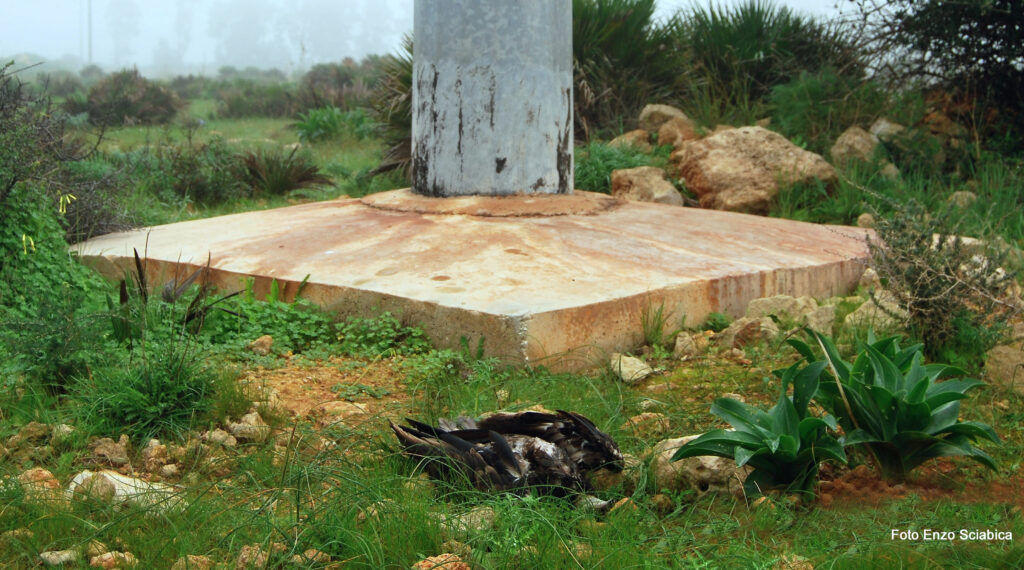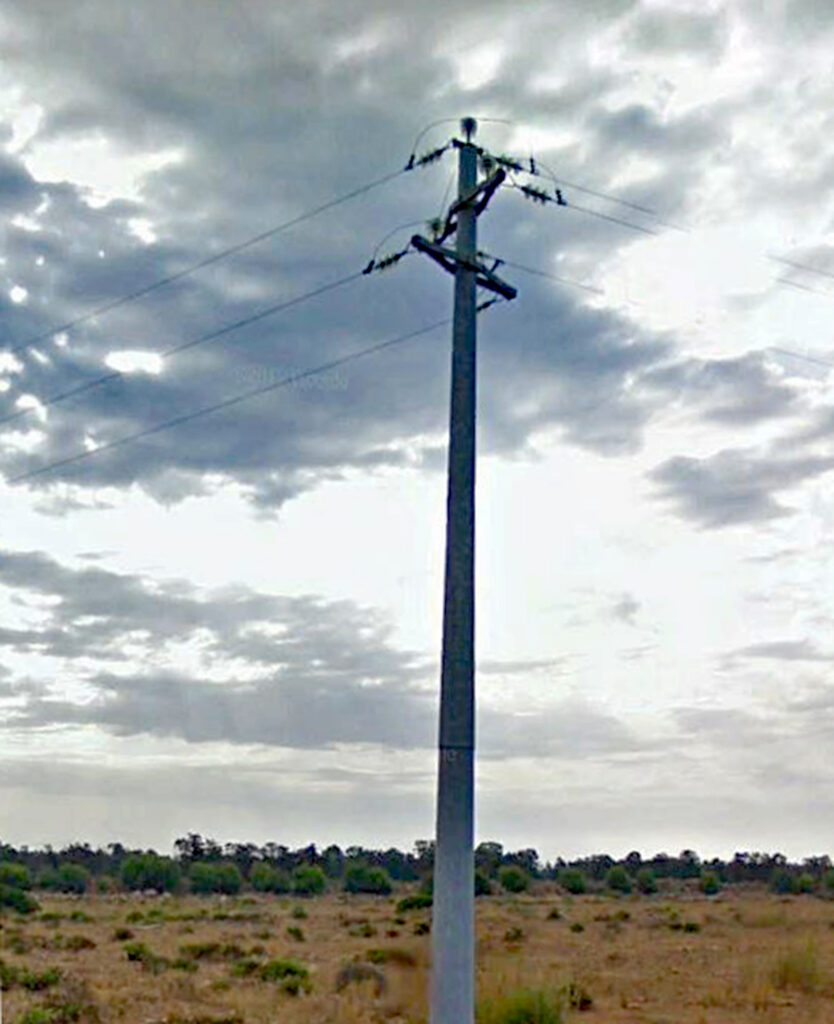Another electrocution incident has occurred involving a vulture released as part of the LIFE Egyptian vulture project. This was Pina, a specimen who, in her short life, was supported by many volunteers who followed her step by step but who could do nothing to prevent this ugly death. Pina was freed in Basilicata in May 2022 at the age of one year old. After staying for a couple of weeks in the release area, she had moved to the southern end of Salento, in Puglia. As soon as the GPS indicated her position in the town of Castro Marina (LE), it was realised that the animal was in difficulty and various members of the local community were alerted.
On 3 June, Pina was rescued on the terrace of a building by the zookeeper Antonio Umberto Fedele in cooperation with the Otranto Forestry Carabinieri, and was subsequently handed over to the Centro Recupero Animali Selvatici (Centre for the Recovery of Wild Animals) in Calimera (LE), where she was given initial care. Despite being thin and hungry, she was in reasonably good health. Promptly transferred to the CRAS in Matera, the young Egyptian vulture quickly recovered, so much so that on 25 July 2022, she was released again in the Murgia Materana Park.
After the second release, Pina travelled to northern Basilicata, Apulia, Abruzzo and Molise, demonstrating, this time, that she had adapted well to life in the wild. From 5 to 28 August, she mainly frequented an area between Abruzzo and Molise, where a group of ornithologists had observed and photographed her and provided her with food (Giulia Pace of the Stazione Ornitologica Abruzzese [Abruzzese Ornithological Station] and Nicola Norante of the Gruppo Molise Studi Ornitologici [Molise Ornithological Studies Group]).
From the 28th of August, Pina moved to Campania and from 30 August to 3 September stayed in Cilento Park, where a volunteer had provided her with supplementary food (Alfredo Galietti of the Ardea Association).
On 3 September, Pina started to migrate decisively southwards and, three days later, reached Sicily. Since 23 September, she had settled in the western part of the island. She here took advantage of the two neighbouring feeding stations that ISPRA and the CERM Association in Campobello di Mazara (TP) had activated. Unfortunately, on 24 December, GPS data indicated an anomaly that led to suspicions of a possible electrocution following a check of satellite images of the area.
The inspection carried out by volunteer Enzo Sciabica, unfortunately, confirmed this hypothesis. What caused Pina’s death was an extension pole of a medium-voltage power line (unfortunately not included among those that were insulated, as an initial measure, by E-Distribuzione under Az. C.4 of the LIFE Egyptian vulture project). The Carabinieri forest rangers then intervened to recover the carcass of the vulture, which was then handed over to the Istituto Zooprofilattico Sperimentale di Palermo for a necropsy.
There have now been four released Egyptian vultures that, with certainty, died of electrocution. It is well known that electrocution claims thousands of victims among birds every year, but only the use of GPS devices makes it possible to identify cases and find the bodies.
The typology of the structures of medium voltage lines in Italy favours this mortality and only large-scale insulation measures can reduce this serious phenomenon. For those involved in the LIFE Egyptian vulture project, 2022 will be remembered as a fateful year, in which the most fearsome threats to the conservation of the Egyptian vulture did not spare any of the released young.



